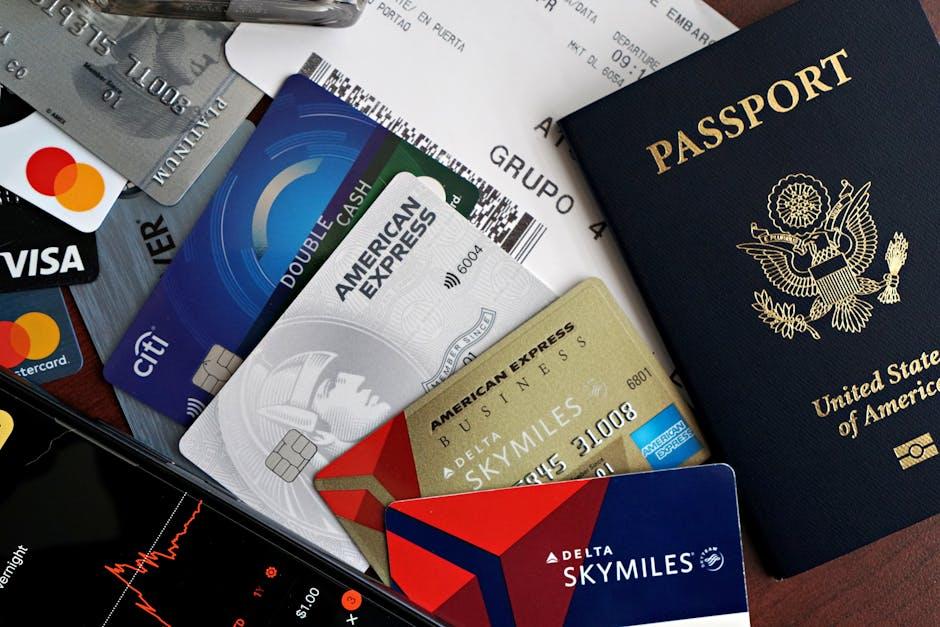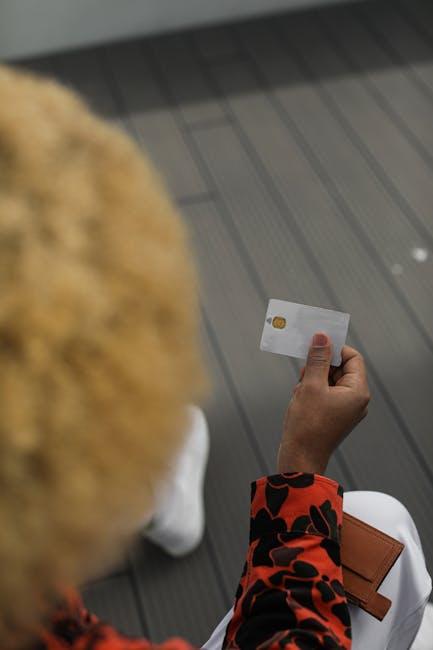In today’s digital age, where convenience meets innovation, our credit cards have become essential tools for everyday transactions. However, this ease of use comes with its own set of challenges, particularly the threat of online theft. As cybercriminals become increasingly sophisticated, it’s crucial for consumers to arm themselves with knowledge and strategies to outsmart these thieves. This article explores essential credit card safety tips that will help safeguard your financial information from prying eyes and ensure your online shopping experience remains secure. With a few proactive measures, you can enjoy the benefits of modern commerce without the looming worry of fraud.
Understanding the Digital Landscape of Credit Card Fraud
Credit card fraud has evolved significantly in our increasingly digital world. Understanding the digital landscape is crucial in safeguarding your finances. Here’s what you need to know:
- Types of Fraud: The most common types of credit card fraud include:
- Card-Not-Present (CNP) Fraud: This occurs when your credit card information is used online without physical possession of the card.
- Account Takeover: Fraudsters gain access to your account and change details, making unauthorized purchases.
- Data Breaches: Large-scale hacks on retailers and payment systems where customer data is stolen.
How Fraudsters Operate: Understanding how thieves operate can better equip you to protect yourself:
- Phishing Scams: Emails disguised as legitimate requests can trick you into revealing sensitive information.
- Malware: Installing malicious software can allow hackers to access your data directly from your devices.
- Skimming Devices: These are small devices placed on ATMs or card readers to capture card information during transactions.
A key method of protection is to stay informed about the latest fraud trends and prevention strategies. Here’s a quick reference guide:
| Fraud Prevention Tip | Description |
|---|---|
| Use Strong Passwords | Combine upper and lower case letters, numbers, and symbols. |
| Two-Factor Authentication | Add an additional layer of security beyond just your password. |
| Monitor Your Statements | Review transactions regularly to spot unauthorized activity early. |
| Secure Your Devices | Install antivirus software and keep your systems updated to protect against intrusions. |
Be proactive. By recognizing the methods used by fraudsters and understanding how to protect yourself, you can significantly reduce your risk of becoming a victim. Always treat your credit card and personal information as confidential and act swiftly if you suspect any fraudulent activity.

Essential Tools and Technologies for Enhanced Security
To bolster your credit card security and outsmart potential online thieves, utilizing the right tools and technologies is essential. Here are some key components that can help safeguard your finances:
- Two-Factor Authentication (2FA): Always enable 2FA on your online banking and shopping accounts. This adds an additional layer of security by requiring a second form of verification, such as a text message code or authentication app.
- Virtual Credit Cards: Many banks like Citi and Capital One offer virtual credit card numbers that you can use for online purchases. These temporary numbers protect your actual card details while you shop online.
- Encryption Technologies: Opt for websites that utilize HTTPS, ensuring your data is encrypted during transactions. Look for the padlock symbol in the address bar before entering your payment details.
- Fraud Detection Alerts: Many credit card providers, such as Chase and American Express, offer real-time alerts for any suspicious activity. Make sure to opt into these notifications to monitor your transactions promptly.
- Mobile Wallets: Services like Apple Pay and Google Pay utilize tokenization, allowing you to make secure transactions without exposing your credit card information directly.
- Updated Anti-Virus Software: Keep your computer and phone protected with reliable anti-virus software. This protects you from malware and phishing attempts that could compromise your financial data.
| Tool/Technology | Benefit |
|---|---|
| Two-Factor Authentication | Enhances account security by requiring additional verification |
| Virtual Credit Cards | Protects your actual card number during online shopping |
| Encryption Technologies | Secures your data during online transactions |
| Fraud Detection Alerts | Notifies you of suspicious transactions in real-time |
| Mobile Wallets | Offers secure checkout without exposing your card details |
| Updated Anti-Virus Software | Protects against malware and phishing threats |
Implementing these tools can significantly enhance your online security and help protect your credit card information from theft. Stay proactive in managing your financial safety.

Smart Shopping Habits to Protect Your Finances
When it comes to protecting your finances while shopping online, adopting smart habits is essential. Here are some effective strategies you can implement:
- Utilize Strong Passwords: Ensure your online accounts use unique, complex passwords. Avoid easily guessed combinations like birthdays or pet names.
- Enable Two-Factor Authentication: Whenever possible, turn on two-factor authentication (2FA) for an extra layer of security. This requires a second verification step beyond your password.
- Shop on Secure Websites: Always look for HTTPS in the website URL before entering any personal or payment information. A small padlock icon next to the URL can also indicate a secure connection.
- Use Virtual Credit Cards: Consider using virtual credit card numbers offered by many banks and financial institutions to minimize the risk of fraud.
- Monitor Your Accounts Regularly: Frequently check your bank statements for card-blunders-to-save-big-in-2025/” title=”Avoid These … Blunders to Save Big in 2025″>unauthorized transactions. Report any suspicious activity to your bank immediately.
In addition to these habits, it’s wise to stay informed about the privacy policies of the websites you frequent, ensuring that they prioritize protecting your information. Here’s a quick reference table of major banks and their fraud protection measures:
| Bank | Fraud Protection Limit | Zero Liability Policy | Monitoring Alerts |
|---|---|---|---|
| Bank of America | Up to $1 million | Yes | Real-time |
| Wells Fargo | Varies | Yes | Immediate |
| Chase | Varies | Yes | Real-time |
| Capital One | Varies | Yes | Immediate |
By implementing these smart shopping habits, you can significantly reduce your risk of falling victim to online thieves and protect your hard-earned money.

Responding to Suspicion: Steps to Take if You’re Targeted
If you suspect that you’ve become a target of online thieves or have experienced potential fraud, taking immediate action is crucial. Here are some steps to guide you through the response process:
- Monitor Your Accounts: Regularly check your bank and credit card statements for unauthorized transactions. Report any discrepancies to your bank immediately.
- Notify Your Bank: Contact your bank or credit card issuer’s fraud department. They can provide guidance and may issue a new card or account number.
- Change Your Passwords: Update passwords for all online banking and shopping accounts. Use strong, unique passwords that combine letters, numbers, and symbols.
- Enable Alerts: Set up account alerts through your bank’s mobile app or online banking platform. This can notify you of any unusual activity in real-time.
- Check Your Credit Report: Obtain a free credit report from the three major credit bureaus (Equifax, Experian, and TransUnion) at AnnualCreditReport.com. Look for any unfamiliar accounts or inquiries.
- Consider a Fraud Alert or Credit Freeze: Placing a fraud alert on your credit report can make it harder for identity thieves to open accounts in your name. A credit freeze restricts access to your credit report, making it nearly impossible for new accounts to be opened.
- Report to the Authorities: File a report with the Federal Trade Commission (FTC) at IdentityTheft.gov. If you know the identity of the thief, report this to the police as well.
| Action | Contact | Notes |
|---|---|---|
| Report Unauthorized Transactions | Your Bank | Act quickly to minimize losses. |
| Change Online Banking Passwords | Self | Use a secure password manager if needed. |
| Freeze Credit | Credit Bureaus | Contact each bureau separately. |
| File an Identity Theft Report | FTC & Local Police | Keep a copy for your records. |
Remember, proactive measures can significantly reduce the risk of further fraud. If you act swiftly, you can mitigate damage and regain control over your financial security.

In Retrospect
In a digital world where financial transactions are just a click away, safeguarding your credit card information has never been more crucial. By implementing the tips and strategies outlined in this article, you can create a robust defense against online thieves. Remember, your vigilance is your best ally; whether through using secure payment methods or regularly monitoring your account statements, every precaution counts. Stay informed, stay secure, and confidently navigate the online marketplace with peace of mind. Your financial safety is in your hands-take charge and enjoy the convenience of online shopping without fear.














